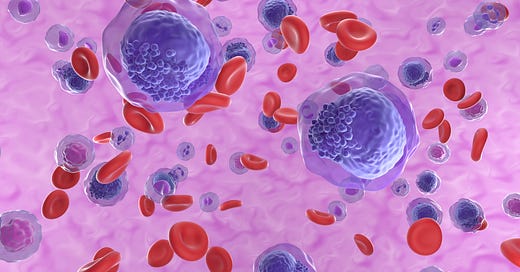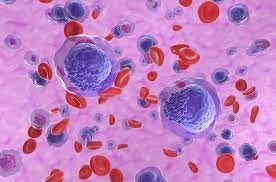FOUR Haematological Diseases you MUST Know For Exams!!
A quick-fire newsletter on some key conditions
I've always found haematology tough.
I can perfectly manage an anaemia (I think) but anything more complicated goes way above my head. The basic physiology of red blood cells, platelets, white blood cells etc can get quite confusing and the pathophysiology is even more mind boggling.
Recently I was revisiting some haematology and thought I'd try teaching some students.
I quickly realised that haematology was a quagmire of confusion and I was really firefighting the confusion I saw on the faces of my students.
Anyway, seeing as it's exam season and revising haematology isn't easy, I thought I'd summarise the FOUR most common white blood cell disorders.
Hint - Pay attention to the points in bold.
1) Acute Myeloid Leukaemia (AML) - VERY LIKELY TO COME UP
Typically an older patient with sudden onset of symptoms.
Blood film: Myeloblasts (exclusively) with Auer rods. These are diagnostic so if you see this then it is always AML.
2) Chronic Myeloid Leukaemia (CML)
Typically age 50. Insidious onset. Associated with a Philadelphia mutation (9:22)
Often presents with splenomegaly.
Blood film: Myeloid cells of all stages of differentiation - myeloblasts, myelocytes
3) Acute LymphoBlastic Leukaemia (ALL) -
Typically child 1-9 year old.
Sudden onset, may also find a mediastinal mass.
Blood film: Blast cells
4) Chronic Lymphocytic Leukaemia (CLL)
Latest onset - typically in elderly.
Insidious onset. Often found on incidental blood tests which finds an incredibly high white cell count and lymphocytes.
Blood films: Lots of small lymphocytes and smudge (premature) cells.
Short and sweet. Exactly what you need for exams I think.
Until next time!
Mo @ Pareto




